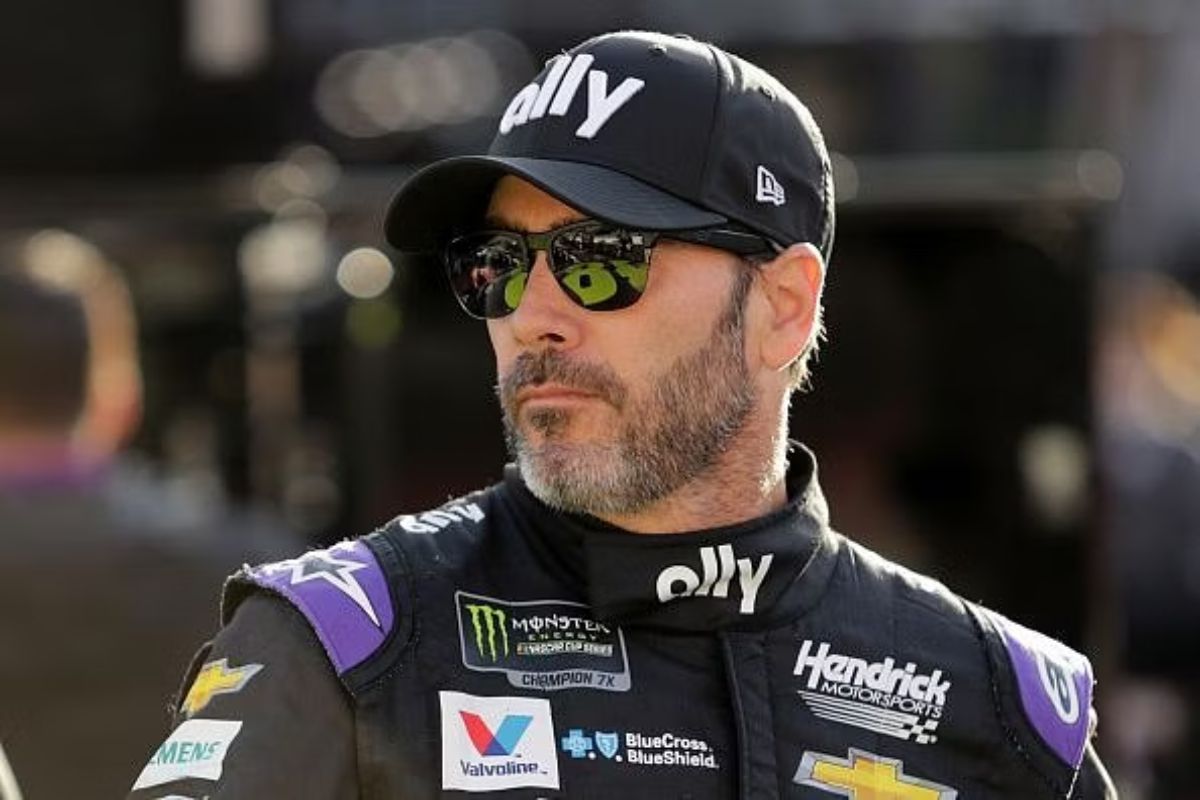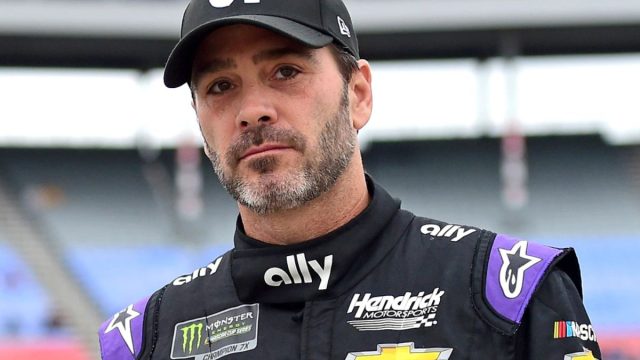Johnson’s Next Gen Dreams Crushed: As the NASCAR community anticipates the full rollout of the Next Gen car, Johnson’s aspirations of mastering this new era of racing seem to be diminishing under the weight of Kevin Harvick’s sobering insights. Harvick, a seasoned veteran, warns of the underestimated challenges posed by the car’s unique demands and the critical need for adaptability in both driving style and team strategy. His cautionary stance not only sheds light on the potential hurdles but also raises questions about the readiness of even the most experienced drivers to navigate this shift.
Key Takeaways
- Harvick critiques Johnson’s adaptation to the Next Gen car, affecting his performance.
- Johnson struggles with tire grip and handling in the new vehicle.
- Sporadic racing schedule hampers Johnson’s consistency and skill refinement.
- Recent team switch adds extra challenges for Johnson in mastering Next Gen dynamics.
- Harvick emphasizes strategic and methodical approach, which Johnson is still adjusting to.
Next Gen Challenges
The introduction of NASCAR’s Next Gen car has brought about a significant shift, exemplified by Jimmie Johnson’s recent difficulties at Texas Motor Speedway. This advanced model, engineered to enhance competition and safety, has reshaped the dynamics of the sport, demanding drivers and teams to adapt radically.
The Next Gen car was designed to offer a more consistent performance across various tracks. However, this consistency also introduces a narrower margin for error. Johnson’s struggle at Texas highlighted how even experienced drivers need to readjust their driving techniques and strategies.
Moreover, the introduction of single lug nut wheels instead of the traditional five-lug pattern affects pit stop strategies and execution, adding another layer of complexity to race day preparations.
This phase of change is pivotal as it sets the stage for future races where adaptability will be as significant as speed. Understanding these intricacies is essential for mastering the Next Gen car, underlining a period of significant transformation within NASCAR’s competitive landscape.

Harvick’s Analysis
Kevin Harvick’s critique sheds light on Jimmie Johnson’s performance issues, pinpointing the challenges stemming from his sporadic racing schedule and recent team switch. Harvick’s observations offer a detailed analysis of the intricate dynamics at play, highlighting the potential disconnects that can arise when a driver like Johnson, accustomed to the consistent rhythm of full-time racing, shifts to a more intermittent competition pattern.
“Look Jimmie’s in a position that’s impossible to be successful in and as painful for me as that is to say, it’s impossible for him to be successful unless its at a Talladega or a Daytona“.-(HARVICK)
The shift from a full-time commitment in NASCAR to participating selectively poses significant hurdles. Such a change demands not only physical recalibration, as drivers must maintain peak condition despite less frequent stints behind the wheel, but also a mental adjustment.
Moreover, Johnson’s switch from Chevrolet to Toyota introduces another layer of complexity. Each manufacturer’s vehicle comes with its unique handling characteristics and technological idiosyncrasies. For Johnson, this means adapting to a new vehicle’s feedback, something that drivers deeply integrate into their racing reflexes over years of continuous exposure. Harvick’s doubt about Johnson’s potential success this season is rooted in these substantial adjustments.
This analysis not only highlights the challenges Johnson faces but also illuminates broader themes about adaptability and the steep learning curves experienced even by seasoned professionals when undergoing significant changes.
Harvick’s Comments on Racing Dynamics
Often highlighting the intricacies of the Next Gen car, Harvick emphasized the changed racing dynamics that drivers must master, particularly at demanding tracks like Texas Speedway. He pointed out that the Next Gen vehicle introduces a host of alterations that greatly impact how racers approach each lap. These include adjustments in the car’s weight distribution and aerodynamics, which demand a recalibration of driving techniques and strategies.
“Because these cars are so much different to drive and if you’re not in them every week with the progression that happens of how you driver them, what you feel and get in front of little loose like he had this weekend, it’s going to be near impossible for him to ever be as competitive as he would want to be”.-(HARVICK)
Harvick’s analysis delves deeply into the specific challenges posed by the Texas Speedway, renowned for its high speeds and pronounced bumps. He noted that the Next Gen car’s stiffer chassis and independent rear suspension system present unique handling characteristics, especially in how the car interacts with such track anomalies. This requires drivers to adopt a more detailed throttle control and steering input to maintain top traction and speed through the track’s challenging sections.
Furthermore, Harvick highlighted the importance of tire management with the Next Gen car at Texas. The altered aerodynamics and weight distribution can lead to quicker tire degradation, making strategic pit stops essential for maintaining competitive lap times. He stressed the importance of understanding the car’s performance envelope—how it behaves in different track conditions and how it responds to adjustments during the race.
Through Harvick’s comments, it becomes evident that mastering these new dynamics is not just about technical skill but also about embracing a strategic mindset that adapts to the evolving characteristics of the car throughout the race. This insight is essential for any driver looking to succeed under the new conditions imposed by the Next Gen vehicles.

Johnson’s Acceptance of Racing Changes
In recognizing the demands of the Next Gen car, Jimmie Johnson has openly accepted the necessity to modify his traditional racing strategies, emphasizing the importance of track position over the previously favored aggressive tactics.
Evolving from an aggressive style that often leveraged raw speed and daring techniques, Johnson now acknowledges the intrinsic value of maintaining a prime track position, which can be crucial in managing tire wear, fuel consumption, and overall race dynamics under the new vehicle specifications.
The Next Gen car introduces a paradigm where mechanical grip and aerodynamics are notably altered compared to previous generations. Johnson’s readiness to adapt his approach suggests a deep understanding of these technical subtleties. By prioritizing track position, he aims to capitalize on the aerodynamic efficiencies that are crucial in races where passing has become more challenging due to the altered airflow dynamics around the cars.
Moreover, Johnson’s acceptance of these changes highlights his resilience and commitment to his sport. While some veterans might struggle or resist such adaptations, Johnson’s proactive adjustment strategy positions him as a keen student of the sport, ever ready to assimilate new data and techniques to refine his performance.
Johnson’s Future Prospects
Despite facing significant challenges with the Next Gen car, Jimmie Johnson’s unwavering determination and strategic adaptability hold the potential to reshape his future prospects in the remaining races of the season. The integration of advanced telemetry and adaptive race strategies might be the key to maximizing his performance. Johnson’s ability to analyze and adjust to the dynamic racing environments could turn the tide in his favor, negating Kevin Harvick’s earlier skepticism.
“I spent a lifetime running a car off the right rear. This car, you just cannot do that. From the aero platform, the tire and I believe the sidewall stiffness of the tire, you can’t slip and slide this car around like I like to do. I kept telling myself coming into this weekend that I need to drive off the right front.”-(JIMMIE)
The upcoming races provide a platform for Johnson to not only refine his technique but also to silence his critics by showcasing his skills with the Next Gen car.
Johnson’s journey is not merely about individual races but about the cumulative growth over the season. Each race is an opportunity to gather data, learn, and improve. This iterative process is vital for mastering the intricacies of the Next Gen car. The combination of technical skills, strategic planning, and mental toughness will define his trajectory in the fiercely competitive landscape of motor racing. 
News in Brief: Johnson’s Next Gen Dreams Crushed
In summary, the shift to the Next Gen car presents significant challenges for experienced drivers like Johnson. Harvick’s analysis highlights the importance of quick adaptation and strategic foresight in navigating the changed dynamics of NASCAR racing.
Johnson’s future success will largely depend on mastering these adjustments to maintain competitiveness in this evolving motorsport environment.
Also Read: Jimmie Johnson’s Next Gen Learning Struggle: The Inside Story

